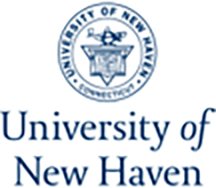Date of Submission
5-15-2025
Document Type
Thesis
Degree Name
Master of Science in Forensic Science
Department
Forensic Science
Advisor
Alyssa L. M. Marsico, Ph.D.
Committee Member
Brooke W. Kammrath, Ph.D.
Committee Member
Nathan A. Seifert, Ph.D.
Keywords
Gunshot Residue (GSR), Laser-Induced Breakdown Spectroscopy (LIBS), Nanoparticles, Nanoparticle-Enhanced LIBS
MeSH
Nanoparticles
LCSH
Gunshot residues, Laser-induced breakdown spectroscopy--Forensic applications, Nanoparticles
Abstract
Traditionally, forensic investigations of gunshot residue (GSR) particles utilize scanning electron microscopy (SEM) for identification and analysis to determine significant facts, such as whether a firearm was discharged. New methods such as laser induced breakdown spectroscopy (LIBS) have emerged that offer the potential for rapid sample analysis. LIBS can be enhanced through the use of nanoparticles. Previous studies have successfully created an adhesive tape with nanoparticles adhered to the surface of the tape. No studies have researched the use of a nanoparticle functionalized adhesive for the analysis of GSR. Therefore, this study investigated if a nanoparticle functionalized adhesive can be created using the determined optimal nanoparticle for GSR for use in nanoparticle enhanced LIBS.
To address this purpose, LIBS spectra from GSR samples with and without nanoparticles were created. Salt solutions of the main GSR elements were placed on created adhesives and analyzed. After being analyzed using LIBS, the peaks on the emission spectra that correspond to the main GSR elements of lead, barium, and antimony were located and their intensities were compared between nanoparticle-enhanced and non-enhanced samples. A similar methodology was used for GSR samples collected from a gun range, where traditional adhesive stubs and created adhesives were used to collect GSR present on the hands of a shooter. Nanoparticles were applied to some stubs and all samples were analyzed using LIBS. Analysis of the resulting emission spectra was the same as above. Increased LIBS signals have been observed for the characteristic GSR elements using gold and silver nanoparticles, but the optimal has not yet been determined.
In order to create a nanoparticle-functionalized adhesive, a modified version of the procedure from a previous study was followed. Various types of tape were manually peeled of and immersed in either a gold or silver salt solution for times ranging from 6 to 48 hours under different parameters to create these tapes. LIBS was used to confirm the procedure was successful in functionalizing the tape with NPs. A GSR sample was applied to the created adhesive and analyzed using LIBS. It was found that the created adhesives with both gold and silver were successful in increasing the signal intensity for wavelengths corresponding to the characteristic GSR elements by factors ranging from 1.1 to 2.7.
A nanoparticle functionalized adhesive for LIBS analysis will be useful as a screening method for GSR samples. Reducing the samples run on a SEM to only those with a high probability of containing GSR particles will save labs time and money. Portable LIBS technologies are being researched, and nanoparticle functionalized adhesives could be used for rapid, on-scene analysis on GSR samples in the future.
Recommended Citation
Wheeler, Benjamin, "Creation of a Nanoparticle Functionalized Adhesive for Libs-Based Detection of Gunshot Residue" (2025). Master's Theses. 247.
https://digitalcommons.newhaven.edu/masterstheses/247

